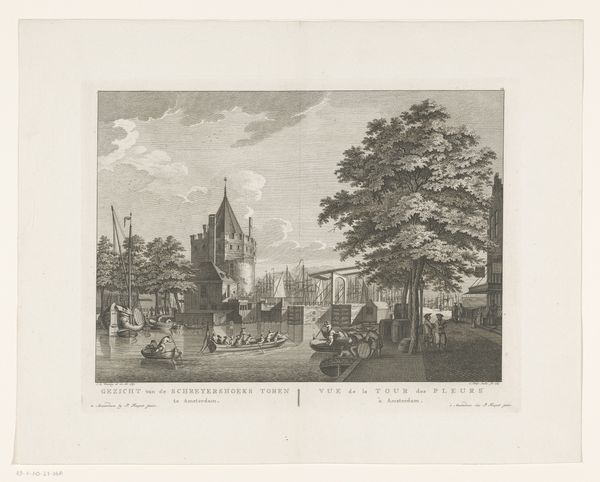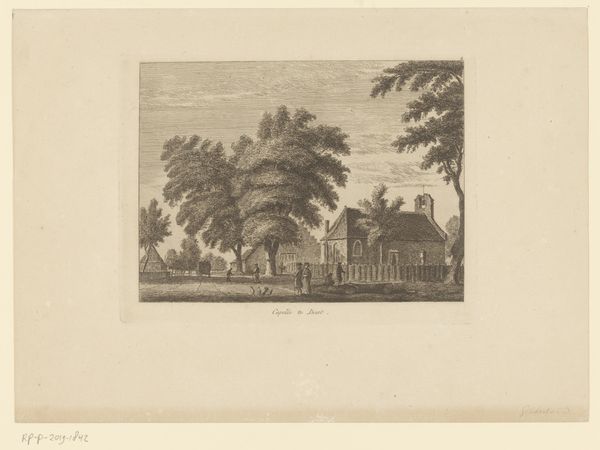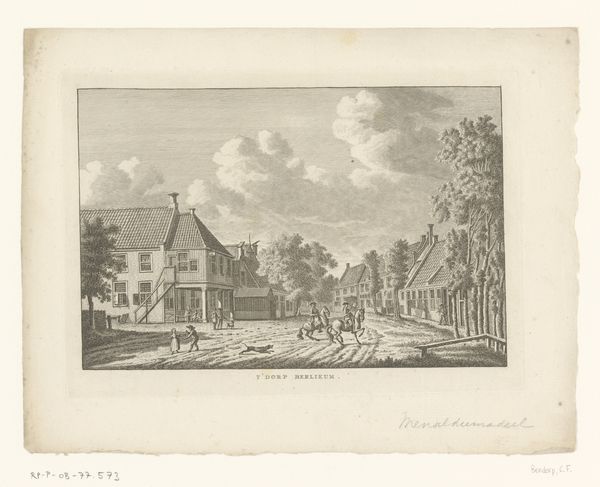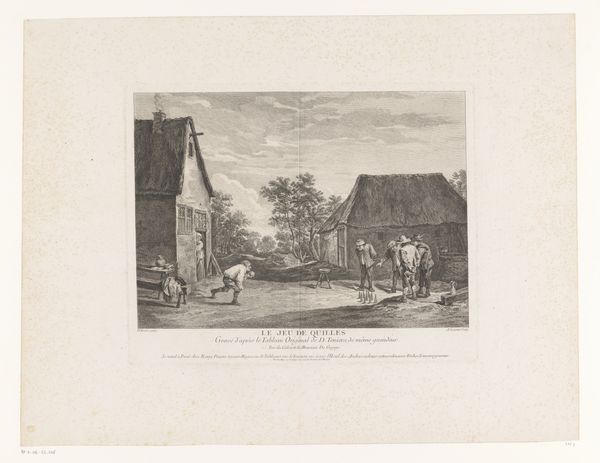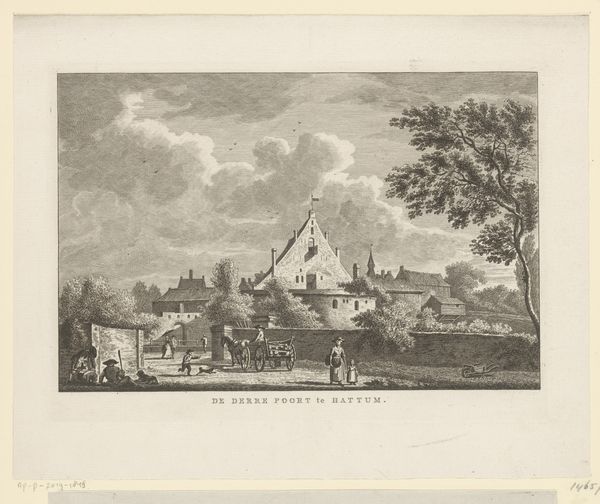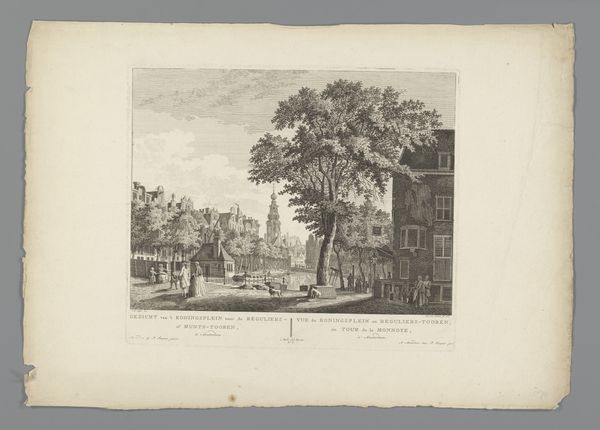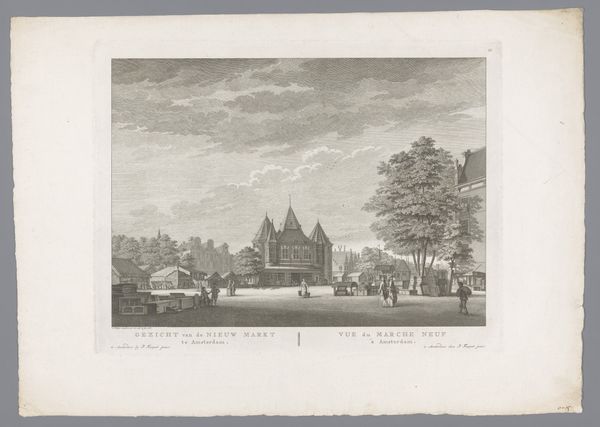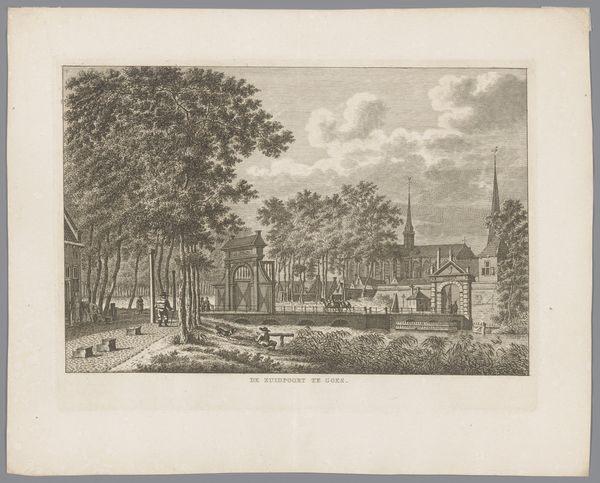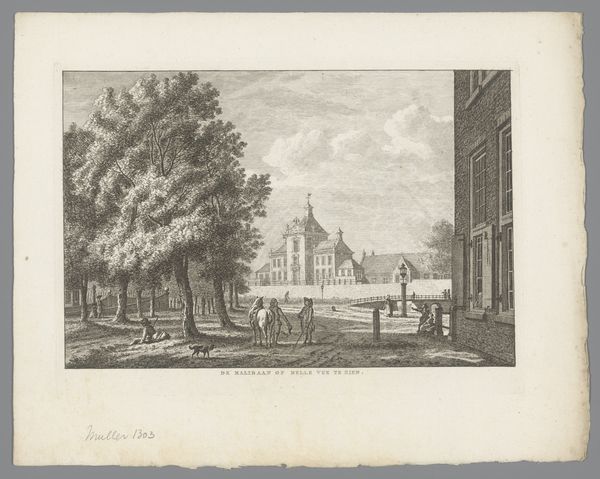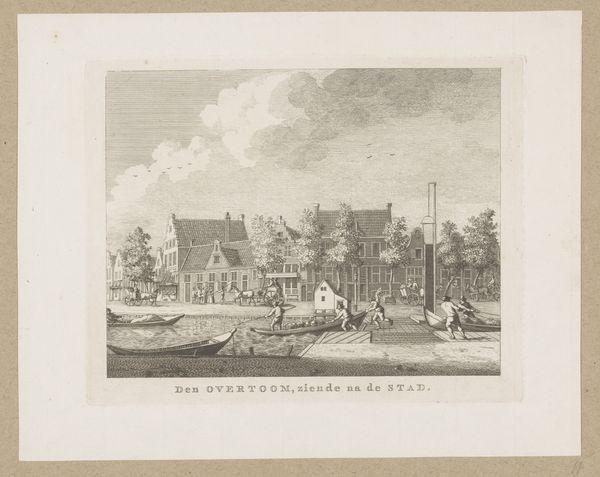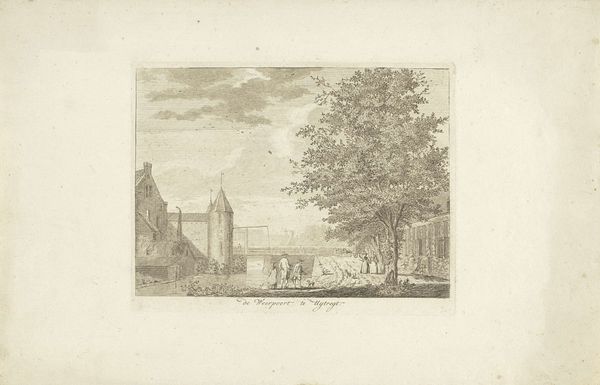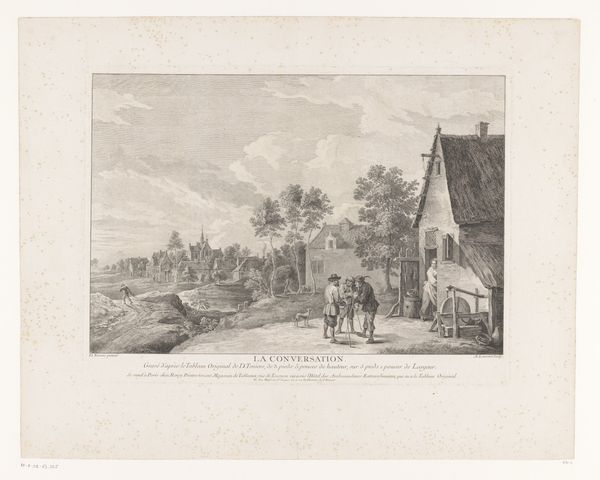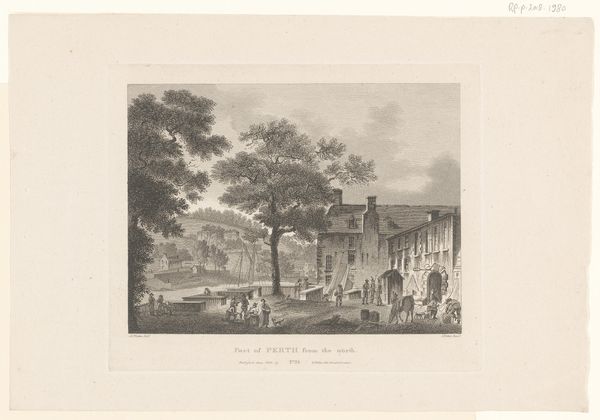
print, etching
#
dutch-golden-age
# print
#
etching
#
landscape
#
etching
#
cityscape
#
realism
Dimensions: height 160 mm, width 211 mm
Copyright: Rijks Museum: Open Domain
Curator: I’m immediately struck by the peaceful stillness in this etching; a quaint, idyllic quality permeates the scene. Editor: Indeed. What we are viewing is "Dorpsgezicht in Druten," or "Village View in Druten," made circa 1770-1800 by an anonymous artist. It’s part of the Rijksmuseum’s collection and created using the etching technique, a popular medium for depicting landscapes during the Dutch Golden Age. Curator: Golden age is the word. Look at how the spire of the church rises, literally central, within the village; yet around its edges are all manner of rural pursuits—gossiping, trading and what looks like someone making a quick getaway! It's like a cross-section of rural life, all existing in relation to the central authority. Editor: The artist masterfully uses line to create depth. The buildings on either side frame the view, guiding your eye toward the church and the subtly rendered background, placing that spire in relationship to both earthly life *and* heavens, almost in the same beat. What kind of societal position does that say about Druten's public-facing views and beliefs? Curator: The soft gradations of light and shadow, achieved through the etching process, give the scene a dreamlike quality; the cloud formation above could be interpreted in any manner, its very softness is welcoming, yet unreadable. Perhaps speaking of the unpredictable fortunes of rural life. I do wonder what an original print run might have meant to locals at the time, and what affect distributing copies would have done to local identity and shared narrative. Editor: Prints like these played a crucial role in disseminating images and shaping perceptions of Dutch life in the 18th century. Consider how they were displayed, sold, and consumed – they were tools of communication, conveying not just aesthetic value, but also ideas about nationhood, religion, and social order, all from one source reproduced at scale. Curator: Fascinating! I never considered how political an idyllic village scene could be. Editor: It just demonstrates the importance of considering the artwork's function in its time and social context. We come away realizing just how nuanced visual representation can be!
Comments
No comments
Be the first to comment and join the conversation on the ultimate creative platform.
